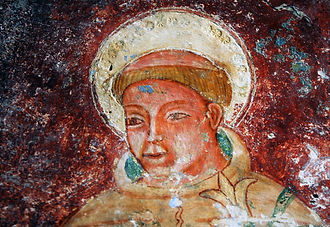
Discover
Vodnjan - Dignano



CHURCHES
GALLERIES
MUSEUMS AND PALACES
Churches in the area of Vodnjan
In the area of Vodnjan, besides the main parish church of Saint Blaise, there are many preserved churches, some of them dating back to the 8th century.
We bring an overview of the churches and their location below.

Parish church of Saint Blaise (1800)
A church adorned with the highest belfry in Istria, unique for the incorrupt parts and bodies of saints and its Religious art collection. It is located on the Parish square.

Saint Martin (14c)
The church that was the seat of the Court of inquisition for Istria. Its located close to the main Commercial street.

Church of Our Lady of Mount Carmel (1630)
Stands out with its elegant facade of finely cut stone and a rosette above the coat of arms of Francesco Barbaro. It’s situated in the lower part of the Commercial street, close to the postal office.

Saint Jacob (9c)
Considered to be the oldest sacred building in the area, and it was the parish church at the beginning of the 13c. One of the most important events in Vodnjan’s history happened here – publishing of Vodnjan’s statute. A street which extends from the main town square towards the former rotunda leads our way to the church.

Saint Mary of Traversa (1615)
A pilgrimage church held by the Conventual Franciscans. Every Easter Monday the faithful pilgrimage to the church in order to express gratitude for sparing the town of plague epidemic. It’s located close to the tennis court in the eastern part of the town.

Saint Catherine (12c)
Contains well preserved medieval wall paintings and different engraved drawings and graffiti. Located in the very center of the town, close to the parking place in Žuka street.

Church of Holy Sunday (15c)
Its interior hides Glagolitic graffiti from 1490. Domenico Cozzeti, the first pharmacist of Vodnjan was buried here, but the tomb was destroyed. It is located on the main road leading from Vodnjan to Pula.

Saint Cross
Here was the seat of the Confraternity of flagellants. The church was also used as a shelter for Pula bishops when they came to Vodnjan. It’s near the bus stop at the beginning of the main Istria street.

Saint Anthony Abbot (13c)
Vodnjan’s economy was based on livestock breeding so Saint Anthony Abbot, the protector of domestic animals, got his church. Today it is found within the Center for Rehabilitation.

Saint Foška
A Romanesque or early Romanesque building, and her spacious vestibule is one of the biggest in Istria. Every first Sunday after February 13 (when it’s Saint Foška’s holiday) the faithful pilgrimage to the church located close to Barbariga (Batvači).
Galleries
Vodnjan-Dignano does its best to complement the existing content with art galleries. There are two galleries and one memorial collection that can be visited with prior notice.

El Magazein Gallery
is situated close to the parish church of Saint Blaise, and it hosted various events so far: painting exhibitions, sculpture exhibitions, architectural drawings and sketches exhibition, concerts (symphony orchestra, classical, jazz, pop and hip-hop music), evenings of poetry, book promotions, theatre nights and fashion shows.

Apoteka Gallery
in the Commercial street was conceived as a “project room” and it’s the place of realization for various formats open to different artistic medias, positions and practices. There are many temporary contents that vary in their character, and the gallery is a place of meeting and conversation.
Museums and palaces

Museum Vodnjan – Bettica Palace (Narodni trg)
On the first floor of the palace there is a valuable paintings collection, collected by Gaetano Gressler in Venice and left to the City of Vodnjan in 1818. It’s a collection of 19 paintings, mostly secularly themed (still life, portraits, battles) from the 17 and 18 century.
The second floor is devoted to the palace itself (history, works on reconstruction), the future Museum of Vodnjan and the citizens that who gave us valuable artifacts.

Palace Bradamante (Narodni trg)
In the palace’s atrium (built somewhere in the 17c) it’s exposed a collection of coats of arms whose aim was to offer the city the history of its area. Today, it is the seat of the Italian community of Vodnjan.

Palace Portarol (Portarol street)
Palace Portarol, also known as Castelletto, is a gothic building whose reconstruction was recently finished, and it is the seat of the town’s Open University and our souvenir shop with tasting room.

Ecomuseum – Istrian de Dignan (Narodni trg)
Maintaining and cultivating soil, returning abandoned objects and farmlands to use and preserving the original varieties and biodiversity are among the goals of this association’s members.
At the museum, it is possible to see the interior of a typical Vodnjan house during history, as well as the furniture, dishes and tools dating from some times gone by.
